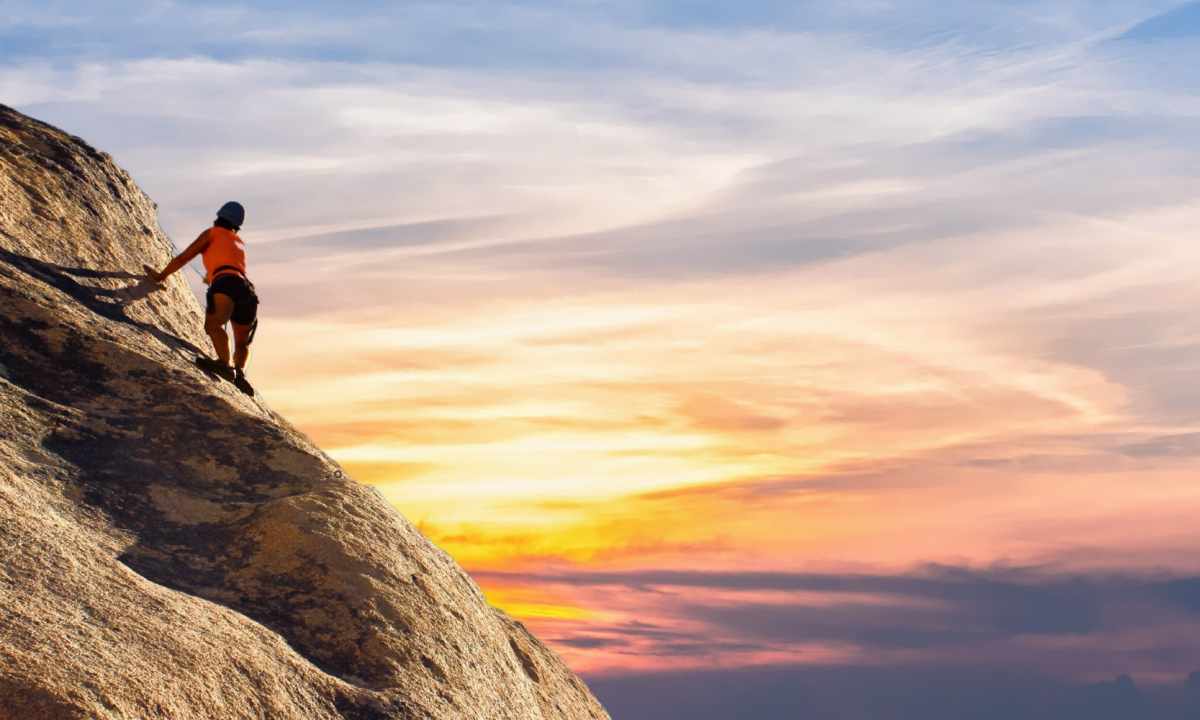Better than mountains there can be only mountains. The reasons pulling in general serious adults highly to the shining peaks can be various. And though nobody will let out the inexperienced beginner without preparation on the slope, you should know the most elementary safety rules at ascension for mountains.
It is required to you
- - helmet;
- - climbing equipment;
- - sunglasses;
- - tracking footwear and "crampons";
- - ice axe and tracking sticks;
- - sunglasses.
Instruction
1. Before starting rise on the slope, attentively examine the area. When planning transition you have to plan the approximate route of the movement, designate difficult sites, places of possible rockfalls and taluses and the place of their round.
2. Check existence and operability of the safety technique, the condition of footwear, ice axes and tracking sticks.
3. Never start ascension on the slope at low overcast, in dense fog, during snowfall, in the dark and at strong wind. It isn't recommended to start ascension right after the rain as at this time the surface of the slope is impregnated with moisture and is unstable.
4. Step over stones and also the rotten and fallen trees occurring in the path. It is impossible to step on them.
5. Moving on unstably lying stones, on slippery and wet slopes, on abrupt descents use the safeguarding. The sheaf has to consist of three-four people. It allows to ensure safety of the certain participant and doesn't hold down the movement.
6. You pass rocky sites in helmets, for the safeguarding use ice axes.
7. On rocky slopes it is safer to move on the rock edge. Avoid the course of streams, gullies, buttresses and any sites of the area where there can be the talus or the rockfall.
8. You pass slopes with the small talus the serpent, trying not to cause falls of breed. On slopes with the large and average talus you shouldn't use ice axes for the safeguarding. You can shift the large stone which will become the reason of the collapse or the rockfall.
9. All osypny slopes are especially dangerous after rains or snowfalls. You pass large and average taluses very carefully, trying the leg even the most, apparently, reliable stones.
10. Woody and grassy elephants are especially dangerous that their relief is difficult looked through, on the way there can be unnoticed holes, gullies, stones and the fallen trees. The short grass is dangerous after the rain as it becomes very slippery.
11. On grassy slopes always use ice axes and tracking sticks. Move at distance from each other that fallen didn't bring down from legs of the companions. In particularly complex places it is worth arranging the handrail from ropes.
12. Rocky and tiled slopes are the most dangerous to passing. The movement on the inclined plate is especially dangerous after the rain. In dry weather such sites pass in turn with the strengthened safeguarding.
13. At ascension on snow and ice sites surely put on boots with crampons and use ice axes. It is better to overcome such slopes in the morning when the crust is strongest.
14. The movement on snow slopes is always carried out in the sheaf. The going ahead person, has to change through certain periods as the tropleniye on the crust takes away many forces. It is better to overcome snow and ice slopes bluntly.
15. At rise on big height always triple acclimatization parking that your organism managed to adapt to change of atmospheric pressure.
16. The obligatory accessory in mountains – sunglasses with high degree of protection. It is possible to get severe burn of the retina of eyes on the snow-covered slope in two-three minutes at the bright sun.

